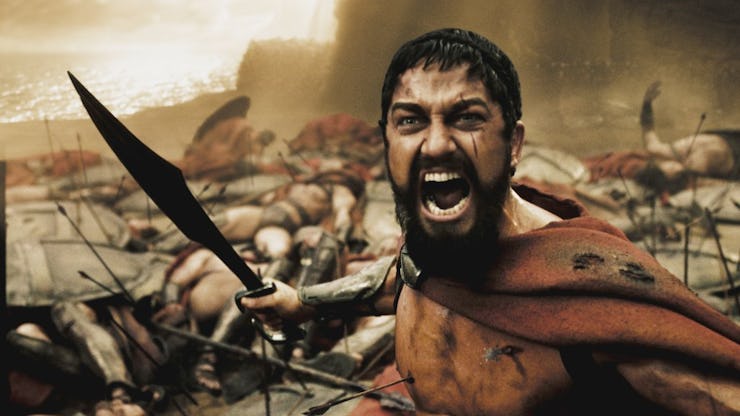Zack Snyder’s first movies reveal the mythology in Justice League
Dawn of the Dead and 300 tried to create surreal cinematic folktales. Will the Snyder Cut succeed?

When I think about Zack Snyder, I think about scale. Even for someone who has never seen a single one of his films, Snyder's name is synonymous with epic storytelling and CGI spectacles, telling stories about mythical titans like Superman and the other Justice League members.
It's fascinating, then, to transport back to Snyder's earliest feature films, 2004's Dawn of the Dead and 2006's 300, sweeping in scope in their own rights, yet focused on small groups facing insurmountable odds.
On the eve of Zack Snyder's Justice League, I watched Dawn of the Dead and 300 for the first time, to see what they reveal about Snyder's work as a filmmaker almost 20 years after their initial release. The results were more revolutionary than I could have imagined.
Snyderspective is a weekly look back at the works of Zack Snyder in an attempt to understand his vision for Justice League.
Snyder's philosophy of film-as-mythology reveals one unexpected reason his Justice League director's cut will be worth watching: unlike almost every other superhero movie out there, the so-called "Snyder Cut" may place weighty concepts like journey and narrative over the comic book characters themselves.
Dawn of the Dead
A 2004 remake of George Romero's mall-dwelling horror classic, Snyder's Dawn of the Dead first struck me as a new take on the zombie genre. It takes place in a world where the undead are a novel concept, which makes sense: after all, Snyder here is revisiting Romero's ideas that invented the genre in the first place.
This has a surprising effect on the storytelling. There's no fear like the fear of the unknown. The ragtag group of survivors (played by Sarah Polley, Ving Rhames and Ty Burrell, among others) knows next to nothing about the threat they're dealing with — just that they needed to stay alive.
Zack Snyder takes this concept a step further by exposing the fears in Dawn of the Dead beyond simply zombies. The fear of betrayal, the fear of outsiders, and the fear of losing a loved one are all shown in all their glory. The fear of boredom is even represented in the frankly stellar montage set to a Big Band cover of "Down With the Sickness."
Of course, it's a zombie movie, and there are certain expectations that come with the genre. Snyder delivers on those expectations in spades. Long before Nick Fury recruited Tony Stark into the Avengers, Snyder's Dawn of the Dead delivers a shocking credits-dwelling ending of its own: bursts of found-footage interspersed within the credits, detailing the brutal demise of the surviving cast. It's horrifying, it's sad, but it's also realistic. These people knew succumbing to the zombies was not a question of if, just a question of when.
300
In a certain light, 300 might be considered a remake of Snyder's remake of Dawn of the Dead.
Think about it: a plucky group faces a mob of increasingly less human people and has to defend themselves not only from the outside threats but betrayals as well, all under a tonally specific color grading filter. Which movie are we talking about here?
That said, while the characters in Dawn of the Dead have the advantage over their opponents by simply being alive, the Spartans in 300 hold an advantage still talked about millennia later: their ruthless Spartan training.
In 300, Snyder heightens what he established two years earlier in Dawn of the Dead. There's an underdog story, and not one but two different grueling betrayals over the course of its two-hour runtime. As a well-known squeamish person within my circles, I was concerned about all the gore. Thankfully, this is the magic of early 2000s CGI, all these years later: the gore looks so fake, so it's not completely overwhelming.
But dated violence effects cease to matter in the face of the story, and it's a brutal story at that. The cast is vast, and the deaths are myriad. Every character loss hurts. By the end, I was completely engrossed.
Zack Snyder and Mythology
Dilios, 300's narrator, echoes the oral tradition of real Greek epics.
The thesis statement of both Dawn of the Dead and 300 can boil down to a single sentence: those who are remembered don't die in vain. This is exemplified in the found-footage credits sequence of Dawn of the Dead. In 300, the connection to myth is more obvious, between the oral tradition narrator, the surreal monsters that appear without explanation, and the belief in gods. But most importantly, the characters in both movies go on doomed missions. Their literal survival is secondary to the survival of their struggle and their story.
Viewing these two movies on their own proves how Snyder treats films as mythology, whether he's honoring film history or ancient history. Looking forward to Snyder's Justice League, the DC Universe is itself a growing history, populated by superheroes and villains constantly faced with insurmountable odds.
The discourse around superhero movies as modern myth is long, confusing, and reductive, but at its core, it touches on how superhero movies follow a set formula found in stories that, like 300, go back all the way to Ancient Greece. Whether you agree these movies are new forms of mythology, they are obviously inspired by myths.
Just like his earliest movies, in Zack Snyder's Justice League, the stories of the DC Universe's greatest team-up won't just be another superhero movie. It'll be an attempt after many years to document not only the stories of the DC superheroes but the countless fans who also struggled against insurmountable odds. It doesn't matter how popular the Snyder Cut is; it only matters that the narrative survives.
Zack Snyder's Justice League premieres on HBO Max on March 18.